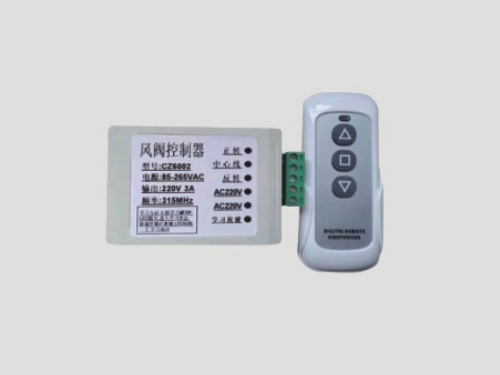Air valve mechanism
Air volume control valve actua
Air valve actuator
Remote controller for smoke ex
Air conditioning accessories
tuyere

Wind valve remote control controller
The damper remote controller is a device used to remotely control and adjust the opening, closing and adjustment of dampers. It is widely used in building air conditioning systems, industrial ventilation systems and other fields. The following is a detailed analysis of the damper remote controller:
1. Definition and function
The damper remote controller receives control signals wirelessly or wiredly, and converts these signals into operating instructions for the damper, thereby realizing remote control and adjustment of the damper. Its main functions include:
Remote control: Users can send instructions to control the opening, closing or adjustment of the damper through a remote control or other control device at a location far away from the damper.
Automatic adjustment: Some advanced damper remote controllers have automatic adjustment functions, which can automatically adjust the opening of the damper according to indoor environmental parameters (such as temperature, humidity, CO2 concentration, etc.) to maintain the comfort of the indoor environment.
Energy-saving control: By accurately controlling the opening of the damper, unnecessary energy consumption can be effectively reduced and energy-saving effects can be achieved.
2. Working principle
The working principle of the damper remote controller usually includes the following steps:
Signal reception: The controller receives control signals from a remote control or other control device through a wireless receiver.
Signal processing: The controller processes the received signal and parses out specific control instructions.
Instruction execution: The controller operates the air valve through the actuator (such as motor, solenoid valve, etc.) according to the parsed instructions to open, close or adjust the air valve.
Feedback adjustment: Some controllers also have feedback adjustment function, which can monitor the status of the air valve and indoor environmental parameters in real time, and fine-tune the control instructions according to the actual situation to achieve better control effect.
III. Advantages and applications
The advantages of the air valve remote control controller mainly include:
Improve comfort: By accurately controlling the opening of the air valve, the indoor temperature and humidity can be accurately adjusted to improve the comfort of the indoor environment.
Energy saving and consumption reduction: Automatically adjust the air valve opening according to indoor environmental parameters to reduce unnecessary energy consumption and achieve energy saving effects.
Convenient operation: Users can remotely control the air valve at a location far away from the air valve without having to operate it on site in person, which improves the convenience of operation.
Air valve remote control controllers are widely used in air conditioning systems of various buildings, such as commercial office buildings, hotels, schools, hospitals, etc. In addition, they are also widely used in industrial ventilation systems.
Working principle of the actuator of the air volume control valve
Electric air volume control valve, as an intelligent air duct equipment, is widely used in air conditioning systems in fields such as construction, medical care, and industry. It can automatically adjust the opening of the valve according to the air flow
2024-05-06
The execution content of the fire damper actuator
To drive the valve action, a matching actuator is required. The actuator used for fire dampers may not be electrically driven, but may also be electrically driven.
2024-05-06
The structural composition of the fire damper actuator
The fire damper actuator is a type of actuator used for fire dampers in ventilation and air conditioning system pipelines, which solves the problem of inaccurate adjustment of the opening angle of valve blades, thus unable to accurately control the ventil
2024-05-06
What functions can the actuator of the air volume control valve achieve?
The actuator of the air flow regulating valve is an automated equipment used to control the air flow valve in ventilation ducts. It can automatically adjust the opening of the air valve by receiving signals from the control system to achieve the goal of c
2024-05-06
